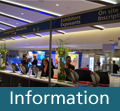| |
14.00 |
|
|
Flash news. The Latest of EVAR Technology
|
| |
Chairmen |
|
|
Alan Dardik, Pascal Desgranges, Roger Greenhalgh, Willem Wisselink |
| |
14.00 |
|
|
PTFe grafts, Marc Van Sambeek |
| |
14.10 |
|
|
Do low profile grafts compromise durability? Sonia Ronchey |
| |
14.20 |
|
|
5 year results of a new generation device, Michel Makaroun |
| |
14.30 |
|
|
Why stopping the follow up put your patients at risk? Michel Bartoli |
| |
14.40 |
|
|
How do the French Engage study compared with international registry? Maxime Raux |
| |
14.50 |
|
|
Discussion |
| |
15.00 |
|
|
Ruptured AAA - Session endorsed by the  |
| |
|
|
|
Duel. Is the debate about ruptured aneurysms treatment over? |
| |
15.00 |
|
|
Open surgery is as good as endo: lessons from IMPROVE trial, Janet Powell |
| |
15.10 |
|
|
Forget the knife: EVAR is a most valuable option in all ruptures, Frank Veith |
| |
15.20 |
|
|
Discussion |
| |
15.30 |
|
|
Local anesthesia for ruptured AAA. One key to improve survival? Jan Heyligers |
| |
15.40 |
|
|
Standard EVAR is not applicable in all rupture cases: what are my tricks to treat 100% rupture cases endo? Mario Lachat |
| |
15.50 |
|
|
Discussant, Claude Angel |
| |
15.55 |
|
|
Open repair for rupture: recent tricks which have improved the results, Adel Khayati |
| |
16.05 |
|
|
Discussion |
| |
16.10 |
|
|
Break in the exhibition hall  |
| |
16.40 |
|
|
How Can We Improve the Results of EVAR |
| |
Chairmen |
|
|
Eric Allaire, Clement Darling, Ian Loftus, Fabio Verzini |
| |
|
|
|
The dead space in AAA sac is the ultimate enemy |
| |
16.40 |
|
|
Concept and new graft design to overcome the issue, Fabien Koskas |
| |
16.50 |
|
|
EVAS: any doubt left after more than 300 procedures and the European register? Ian Loftus |
| |
17.00 |
|
|
Discussion |
| |
|
|
|
How to improve results and cost of EVAR |
| |
17.10 |
|
|
Preoperative use of an electronic simulator, Jean-Nöel Albertini |
| |
17.20 |
|
|
Hypnosis for endovascular interventions: an overview, Véronique Mercier |
| |
17.27 |
|
|
Hypnosis for EVAR: it works! Can you believe it? Asmaa Khaled |
| |
17.35 |
|
|
Fascia suture is cheaper than preclosing device but is it as safe? Thomas Larzon |
| |
17.45 |
|
|
Can endostappling improve the results of EVAR? Jean-Paul de Vries |
| |
17.55 |
|
|
Thrombus lining in an EVAR stent graft: is it harmful, should it be treated? Hence Verhagen |
| |
18.05 |
|
|
Appraisal of current societies guidelines to follow all EVAR patients, Roger Greenhalgh |
| |
18.15 |
|
|
Why stopping the follow up put your patients at risk, Michel Bartoli |
| |
18.25 |
|
|
What are the specific requirements and results of EVAR in Japanese patients? Kimihiro Komori |
| |
18.35 |
|
|
Discussion |
| |
18.45 |
|
|
New tools for clinical research studies, Fabien Leclercq |
| |
18.55 |
|
|
End of the session |












